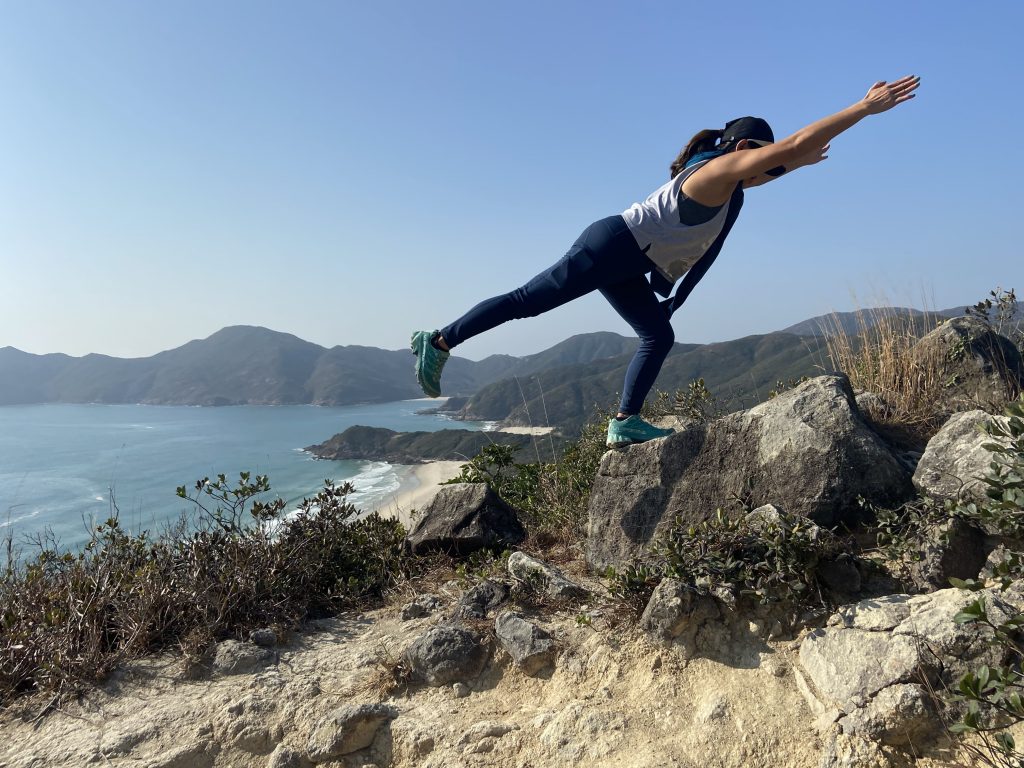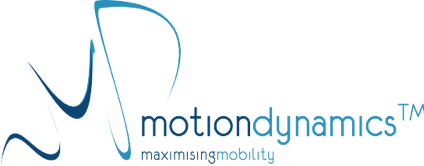Maximising Mobility for longer life
There is more to patient health & recovery than pills. We are all familiar with primary healthcare, the traditional Doctor/Patient relationship typified by prescriptions and surgeries. Secondary health care providers offer a variety of alternatives, including a range of manual treatment techniques that have evolved over centuries. Flexibility and mobility training are often considered forms of regenerative healing for the body and the mind.
Mobility training releases endorphins, movement is eased, and energy is increased
At Motion Dynamics™, our years of evidence-based research demonstrates that stretch therapy is essential for postural correction, flexibility and mobility. Our system combines the best parts of Active Isolated Stretching (AIS), Myofascial and Neuro-muscular release techniques in one protocol. We return your body to anatomically correct posture, reducing pain and maximising mobility. Results driven, individually designed treatment. These techniques have a track record of positive results, physically and mentally.

Stretch therapy is not a new concept
In the 2nd Century BC China, Prince Huai Nan wrote a philosophical review on the importance of stretching for the body’s joints.
"A pure spirit, emotions in equilibrium, and relaxation of all the joints are basic for the sustenance of one's essential nature. Although the joints are places where the qi and blood should flow most freely, in fact, they are places where the qi and blood can become easily stuck or stagnant. Stretching should be done on a daily basis in order to keep the body supple, the qi and blood flowing freely, and the mind relaxed.”
In the ancient Chinese medical text of Nan Jing, the philosophers and doctors were already noting that lack of exercise lead to disease. It sapped the body’s resistance. Prolonged sitting damaged the flesh and prolonged lying damaged the Qi.
In 400AD, Hippocrates declared that nutritious food and regular exercise were the keys to good health. As in China, doctors like Hippocrates were the Phys Ed teachers of their time.
Lu Jiu-zhi, of the Qing dynasty (1636-1912), wrote in Yi Bing Lun (Treatise on Leisure Diseases):
“If ordinary people remain idle and unoccupied, this leads to disease. If minor labor returns one's strength, if their disease improves when occupied by affairs and when busy, then they can forget their disease. If they feel fatigued after meals or fatigued after sleep, this is leisure disease.” Flexibility and movement, it seems, have made sense physically and mentally for centuries.
Doctors and scientists are taking exercise more seriously
They are applying pure science and research to fitness and backing up what we have known for years: flexibility and mobility training is leading-edge medicine. Dr. Mark Tarnopolsky of McMaster University, Canada, is a Neurmuscular and Neurometabolics Disorder specialist. He has pioneered research on fitness as medicine. He refers to himself as an ‘exercise nerd’ and has set about to prove to science skeptics and colleagues that exercise is the panacea for chronic diseases. And it turns out that mobility training is central to functional living well into our senior years. Tarnopolsky performed numerous tests on mice with tumors and other serious illnesses. His research demonstrated that disease can be healed and, biologically speaking, age can be reversed.
He observed that a sedentary lifestyle in mice saw rapid muscle atrophy, hair and hearing loss, significant and rapid aging of the metabolic system, thinned skin and more. The active mice that were put on treadmills 3 times a week for an hour at a time had the skin, hearts, lungs and hair of virile young mice. The cellular regeneration process was revved up.
Exercise is a potent and effective form of decreasing
degenerative disease and prolonging life Dr. Tarnopolsky believes genetic therapy, such as stem cell treatment, blood plasma infusions, & hormonal replacement therapies used to slow the aging process, do not work as well as prescribed exercises for flexibility, mobility, strength and endurance.
In one study, he found “the epidemic emergence of modern chronic diseases largely stems from the adoption of a sedentary lifestyle and excess energy intake. There is incontrovertible evidence from epidemiologic studies that endurance exercise extends life expectancy and reduces the risk of chronic diseases.” For example, after a run, your eyes are sharper, skin is brighter, and hormone output more responsive. This is better than any drug that doctors can prescribe.

Mobility training releases endorphins, movement is eased, and energy is increased
There is a host information regarding the benefits of movement and exercise. Yet, surprisingly, only 20% of Americans over the age of 6 are doing the National Institute of Health recommended 150 minutes of movement a week. Research suggests lack of exercise is a major cause of death, as well as early onset of arthritis increased back pain, poor libido, depression and anxiety. (HEALTH PSYCHOLOGY OPEN)
A World Health Organization factsheet reported “insufficient physical activity is one of the leading risk factors for death worldwide. Insufficient physical activity is a key risk factor for … cardiovascular diseases, cancer and diabetes, and, globally, 1 in 4 adults is not active enough.” [1] (WHO)
An earlier report noted “Physical inactivity is the fourth leading risk factor for global mortality, attributed to 6 percent of deaths globally."[2] (WHO, 2016) This sets off a chain reaction or a downward spiral in long-term health and well-being.
Exercise Deficit Disorder
With all the gyms and boutique fitness centers opening, there remains a surprising lack of active people. To better understand the effect, there is a new breed of researchers: inactivity physiologists. They study sedentary people, which is now referred to as inactivity. And there is a new term for inactivity: “Exercise deficit disorder.”
According to an article in the British Journal of Sports Medicine, “observational studies have suggested that prolonged bouts of sitting time and lack of whole-body muscular movement are strongly associated with obesity, abnormal glucose metabolism, diabetes, metabolic syndrome, cardiovascular disease (CVD) risk and cancer, as well as total mortality independent of moderate to vigorous-intensity physical activity.” [3]
How did we get here?
It begins with the schools not prioritizing physical education and team sports. The trend in school systems is toward more academics. There is more pressure to do well in tests. Fitness is being pushed aside and seems to be increasingly of reach to our youngsters.
Kids need to know exercise is essential for learning, retaining information, and boosting energy. They are constantly reminded that exercise is important for general health, the heart and the brain. But they are left to their own resources to when it comes to practising sport and fitness. We know that physical activity has significant health benefits and contributes to the prevention of cardiovascular diseases and diabetes. Sadly, “more than 80% of the world's adolescent population is insufficiently physically active.”(WHO, 2018)
Fitness is not about the Olympics and elite sports
Fitness is not about pushing heavy weights either. Fitness is about doing something … anything. All movement is exercise. Anything you like to do is a great exercise, whether it is skateboarding, throwing a ball, hitting a shuttlecock or scuba diving. As long as you do it with correct posture and form, balance and fluidity, any activity is good activity.
New research programs are examining the effects of exercise on all the body systems. Every aspect of the exercise will soon be tested and evaluated from hormones, enzyme activity to brain and lung tissue research. Hopefully, this detailed research will lead primary healthcare practitioners and the education system to return the focus to Physical Education and Physical Training providers.
Marc Ashley Harris’ “Beat the Street” intervention research found “further support for the relationship between physical activity and mental wellbeing and highlights the substantial differences in mental wellbeing between the least and most active individuals.” [4]
At Motion Dynamics™ we stretch & align your body to ease the way you move
We help optimize performance by re-balancing the loads on your joints and soft tissue. This helps avoid unnecessary injuries. The result is friction-free movement, increased range of motion and improved overall well-being. We have observed not only the physical benefits of manual treatment techniques, but the mental benefits as well. Heightened positivism, higher self-esteem and enhanced confidence are just a few. The Motion Dynamics™ system combines the best parts of Active Isolated Stretching (AIS), Myofascial and Neuro-muscular release techniques in one protocol. We return your body to anatomically correct posture, reducing pain and maximising mobility. Results driven, individually designed treatment.
Now is a good time to rethink your exercise program. Boost energy levels and feel your best by maximising mobility. Reset your body and open your mind. Live longer and stronger.

EXCERPTS OF THIS ARTICLE WERE TAKEN FROM A BOOK BY BOB FLAWS: “IMPERIAL SECRETS OF HEALTH AND LONGEVITY”, BLUE POPPY PRESS
[1]. WORLD HEALTH ORGANIZATION FACTSHEET, HTTP://WWW.WHO.INT/EN/NEWS-ROOM/FACT-SHEETS/DETAIL/PHYSICAL-ACTIVITY
[2]. “THE RELATIONSHIP BETWEEN PHYSICAL INACTIVITY AND MENTAL WELLBEING: FINDINGS FROM A GAMIFICATION-BASED COMMUNITY-WIDE PHYSICAL ACTIVITY INTERVENTION”, MARC ASHLEY HARRIS.
[3]. “ARE WE FACING A NEW PARADIGM OF INACTIVITY PHYSIOLOGY?” ELIN EKBLOM-BAK, MAI-LIS HELLÉNIUS, BJÖRN EKBLOM.
[4]. “THE RELATIONSHIP BETWEEN PHYSICAL INACTIVITY AND MENTAL WELLBEING: FINDINGS FROM A GAMIFICATION-BASED COMMUNITY-WIDE PHYSICAL ACTIVITY INTERVENTION”, MARC ASHLEY HARRIS
